An image essay of design elements from a little modeled period of American Railroading
As part of researching model ideas, I noticed that images of antebellum
locomotives were few and scattered. The 1850s was an important and major
transition period for railroads in North America. Not only were the number of
rail miles exploding exponentially, but locomotive design was evolving
from the experimental types of the 1830s and early 1840s towards what most
of us today think of as a 'steam locomotive'... Yet, it is rarely represented
or modeled. Even such historically important locomotives as the "General" and Golden
Spike engines are usually rendered in their later rebuild
configurations and paint.
The following photographs have been borrowed as a representative sampling of locomotive designs from various railroads and builders of the period to help people more appreciate this important period of our rich railroad heritage. I make no claims of ownership. Many of the images are actually larger than they appear here to better serve people who may wish to study them more deeply. It is my sincere hope that you will find them as fascinating as I did.
Allen aka 'Mik' - Dec 1, 2010
The following photographs have been borrowed as a representative sampling of locomotive designs from various railroads and builders of the period to help people more appreciate this important period of our rich railroad heritage. I make no claims of ownership. Many of the images are actually larger than they appear here to better serve people who may wish to study them more deeply. It is my sincere hope that you will find them as fascinating as I did.
Allen aka 'Mik' - Dec 1, 2010
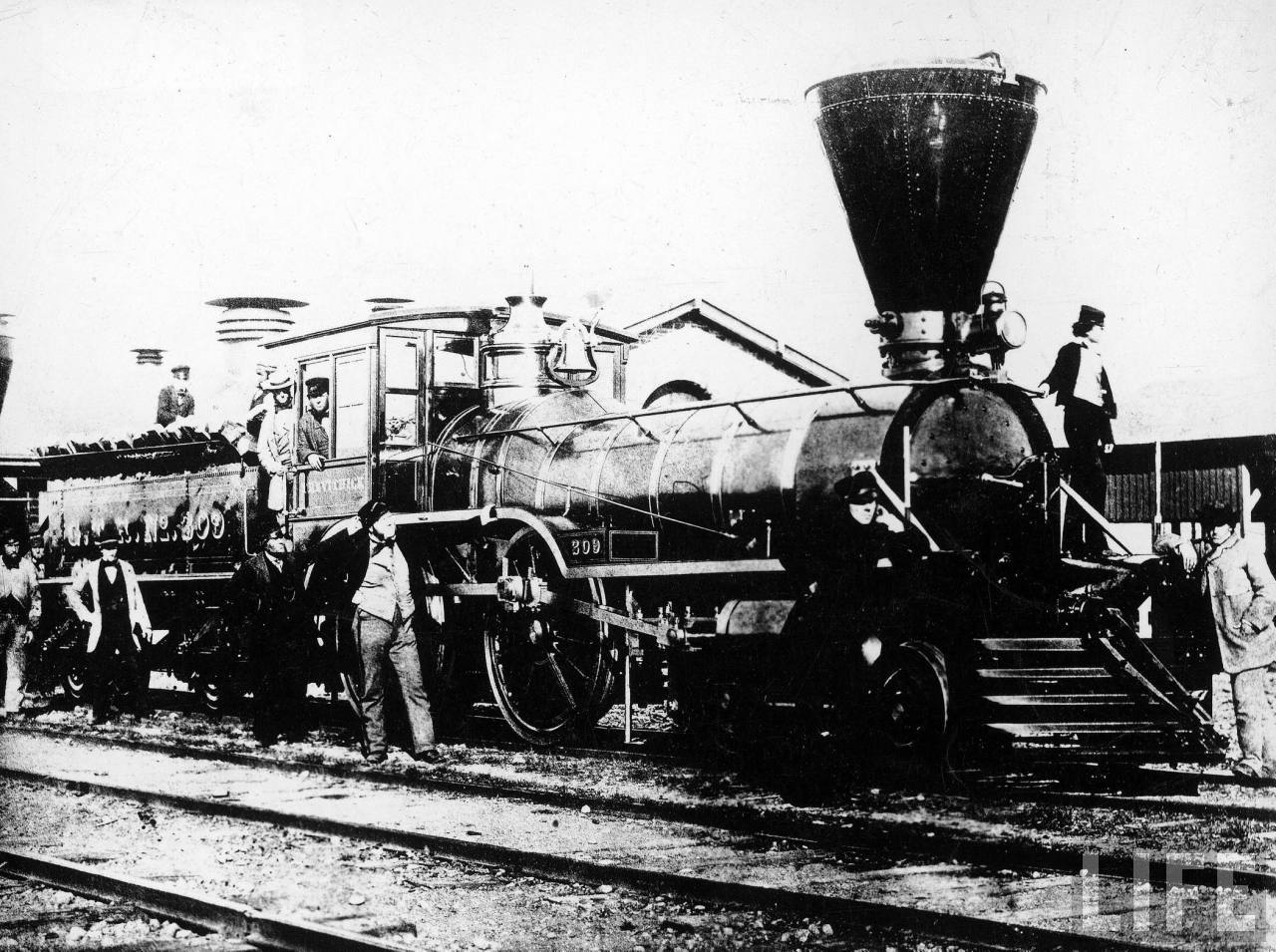 A Grand Trunk locomotive of 1859 |
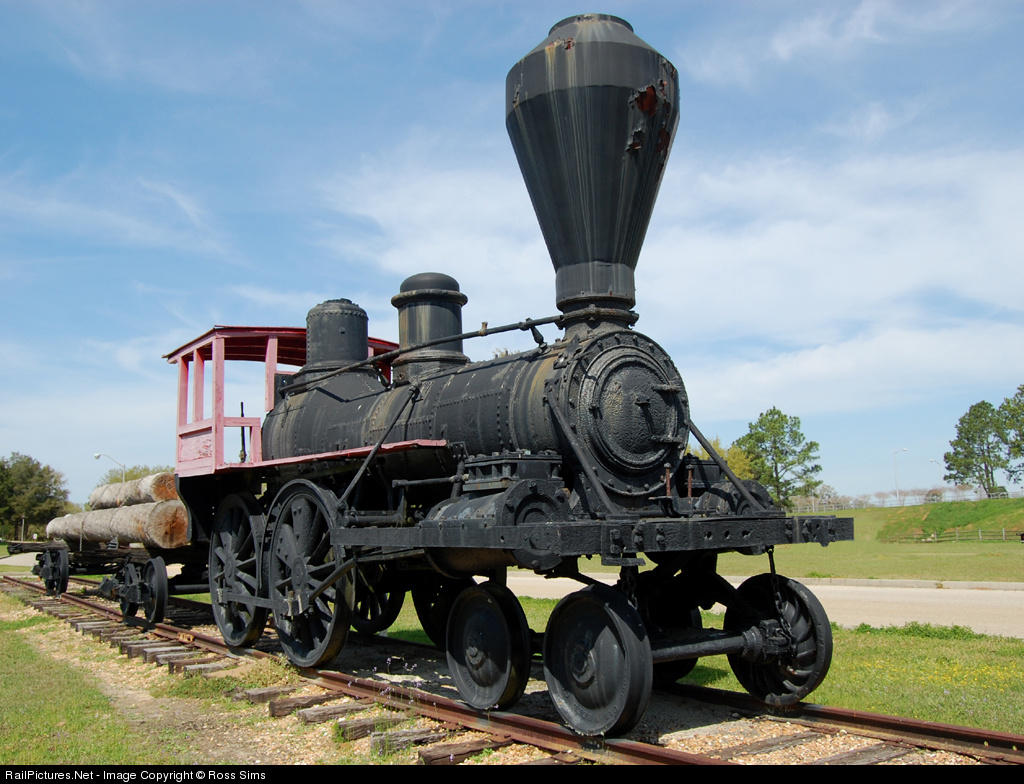 Remains of an 1850-55 era Bache Brothers Lumber locomotive
retrieved from the Suwannee River near Luraville, Florida in 1979 |
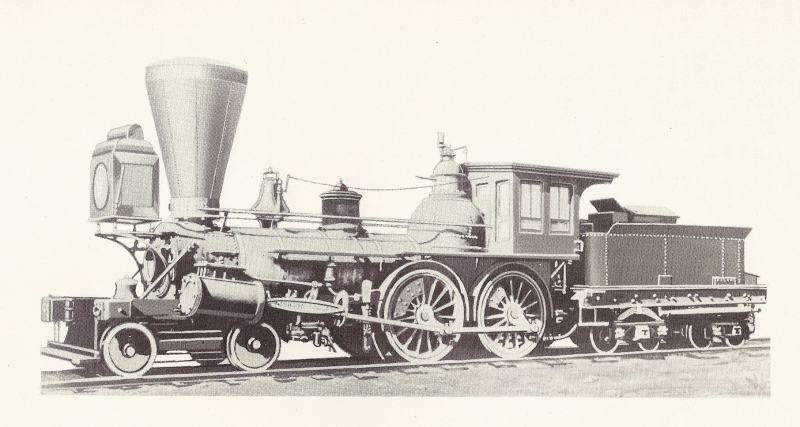 Milwaukee Road #1 built in 1848 by Norris in Philadelphia
|
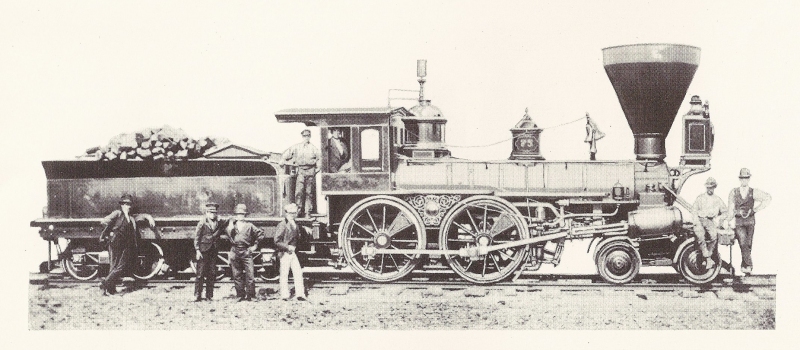 Milwaukee Road #75 built 1850 by Schenectady Loco Works
|
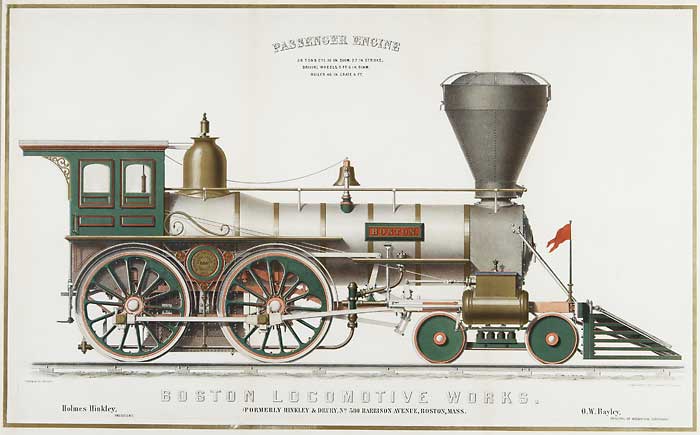 A Boston Locomotive advertisement ca 1852
|
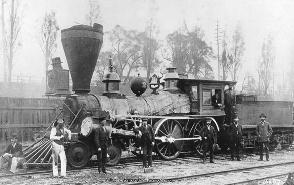 "Toronto" The first Canadian built locomotive. Constructed in 1853 for the Ontario Simcoe and Huron Railroad Union Company (became Northern Railway of Canada in 1858) |
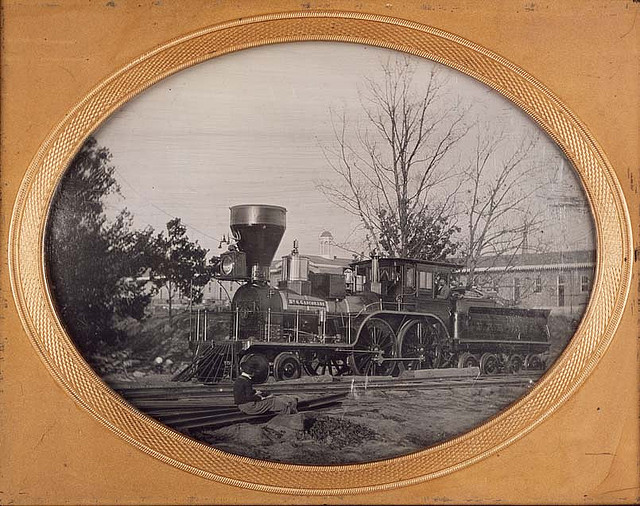 Pacific Railroad locomotive Gasconade, ca. 1855
|
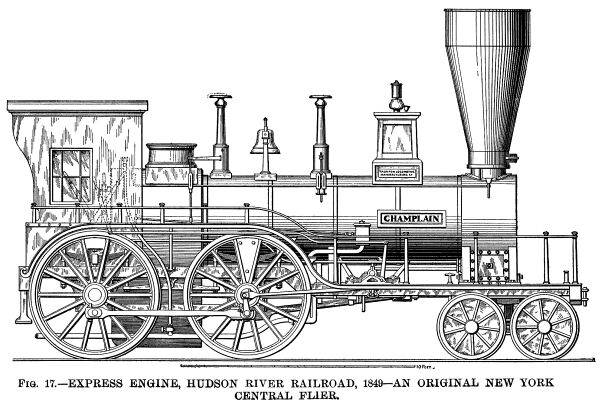 'Champlain' was a fine engine designed by a Mr. McQueen
for the Hudson River Railroad in 1849
|
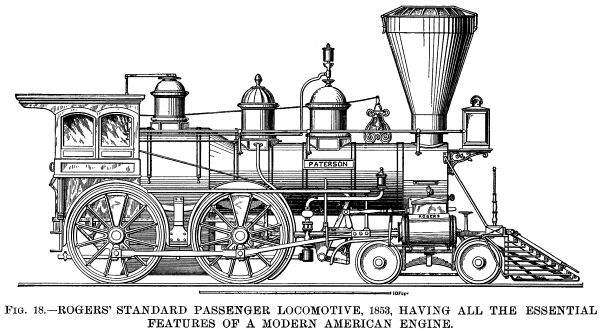 'Paterson ' was a standard Rogers passenger locomotive design in 1853
|
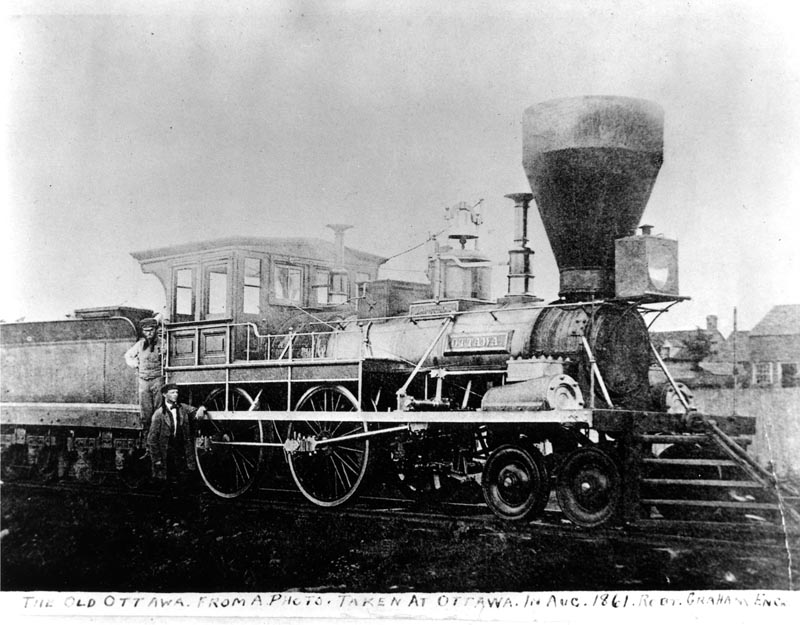 "Ottowa" an 1854 Hinkley, as she appeared in 1861
|
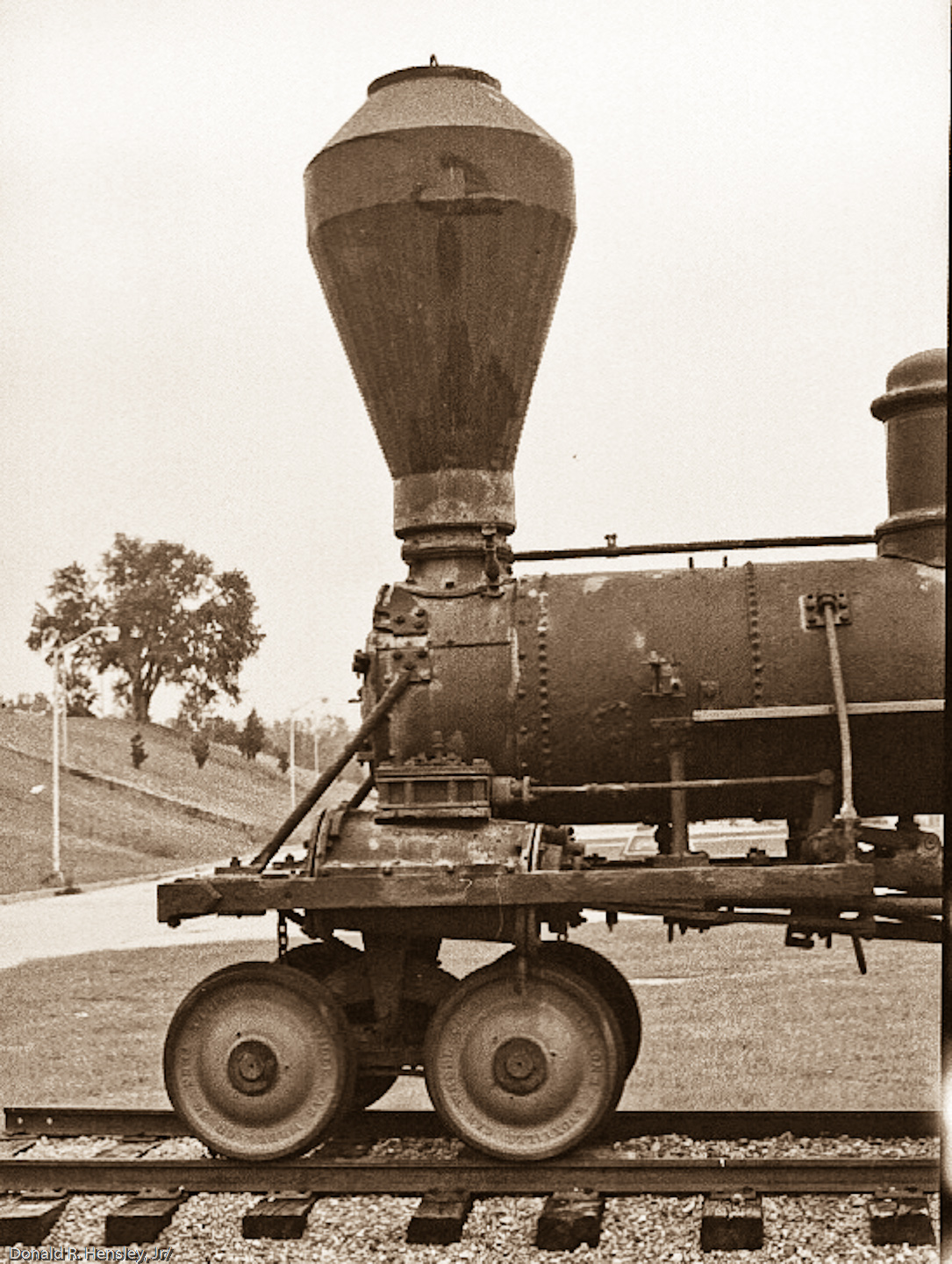 cylinder and frame of the Luraville locomotive believed to be a Danforth-Cooke
|
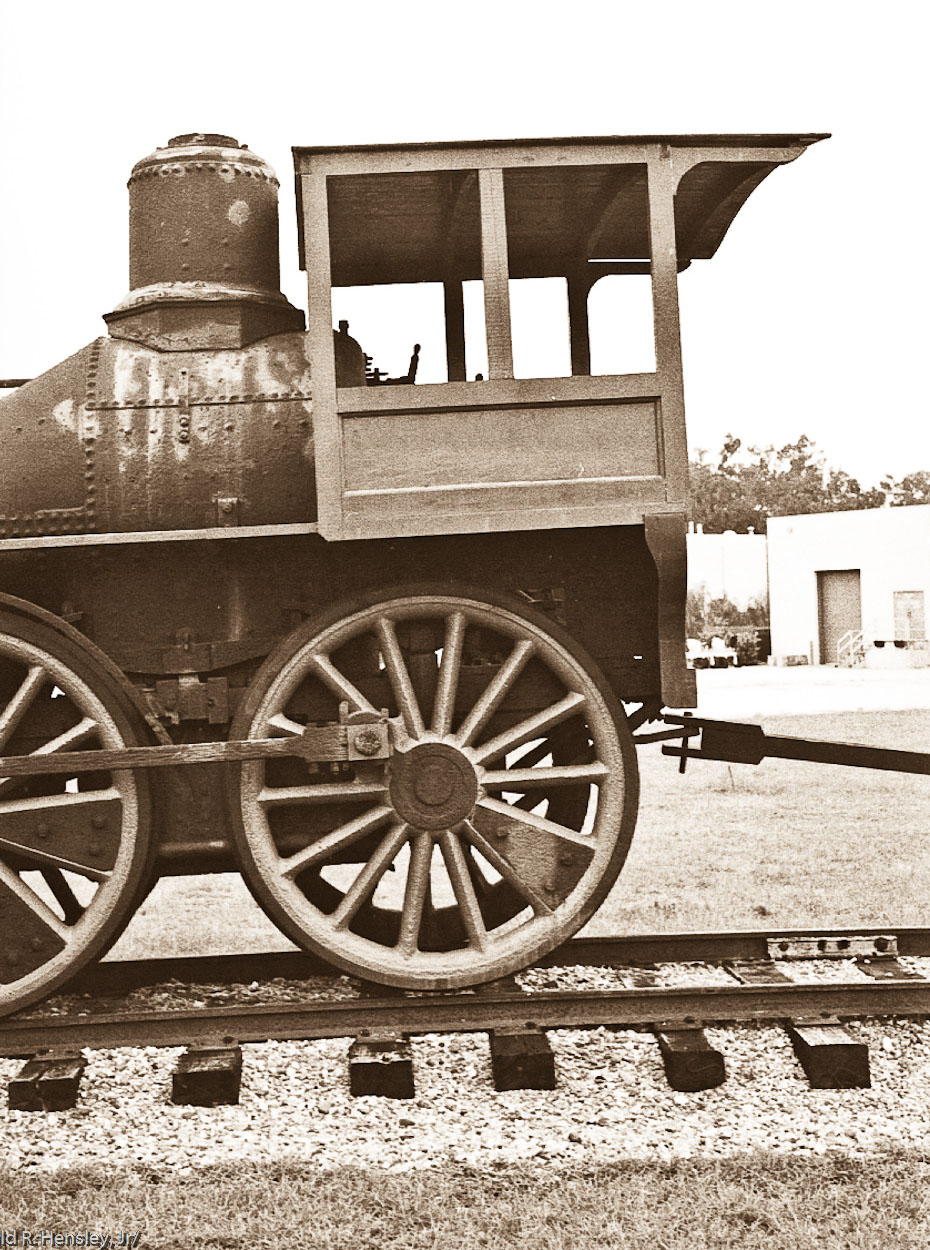 Cab detail of the Luraville locomotive
|
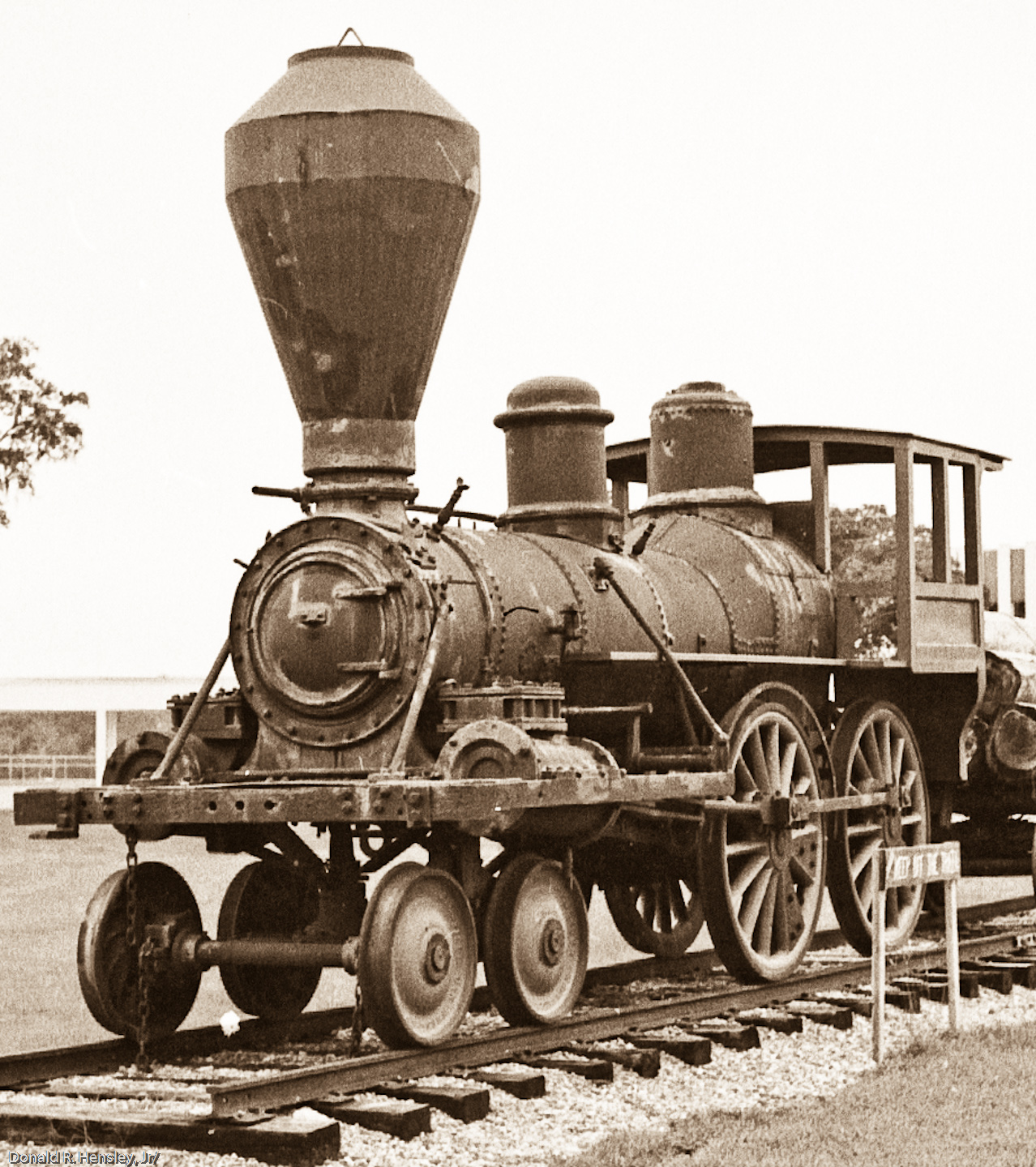 Left 3/4 view of Luraville locomotive
|
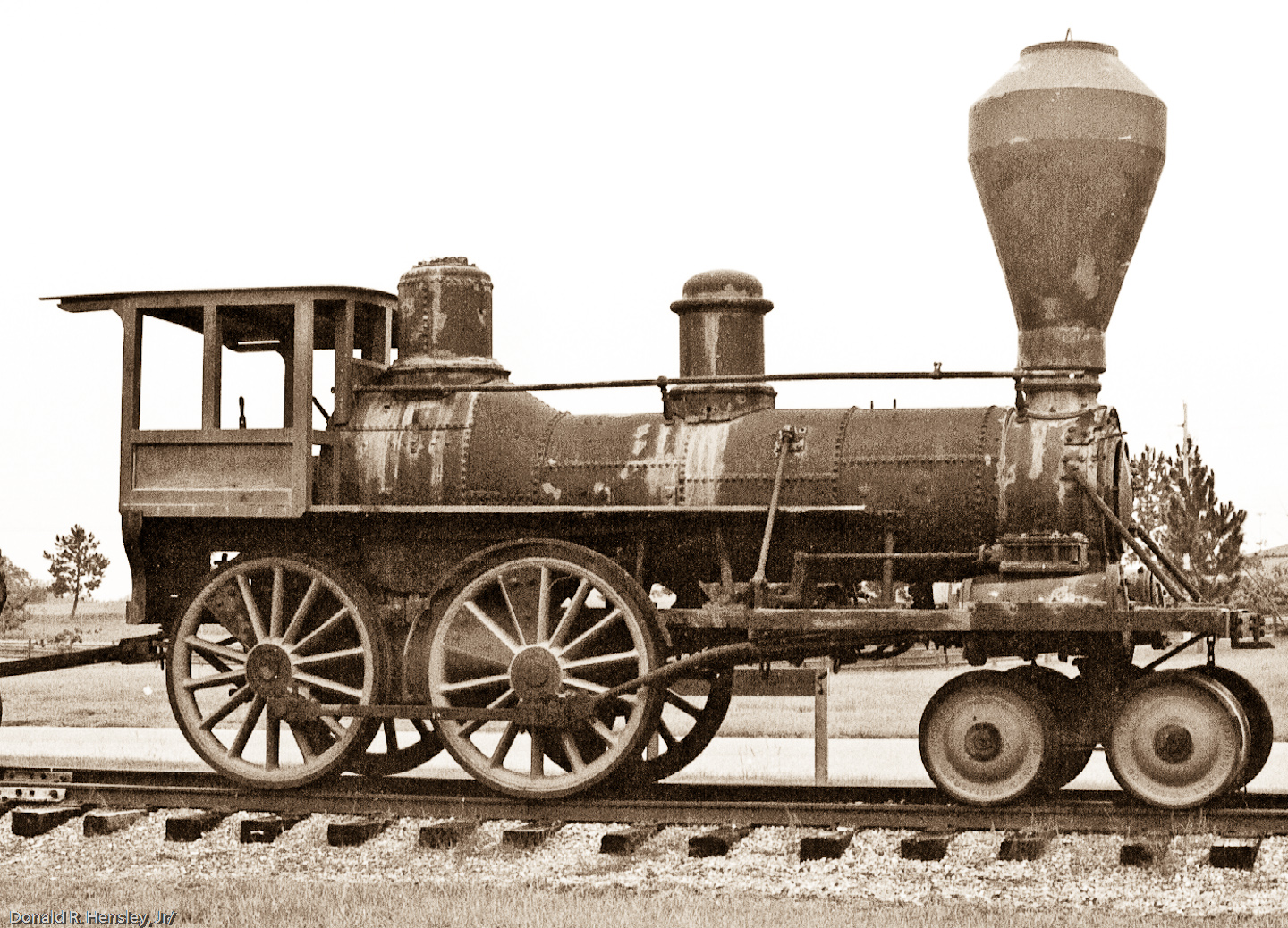 Right side Luraville locomotive.
Most engines of the time were of a similar 4-4-0 configuration with 4
small pilot wheels and 4 driving wheels.
|
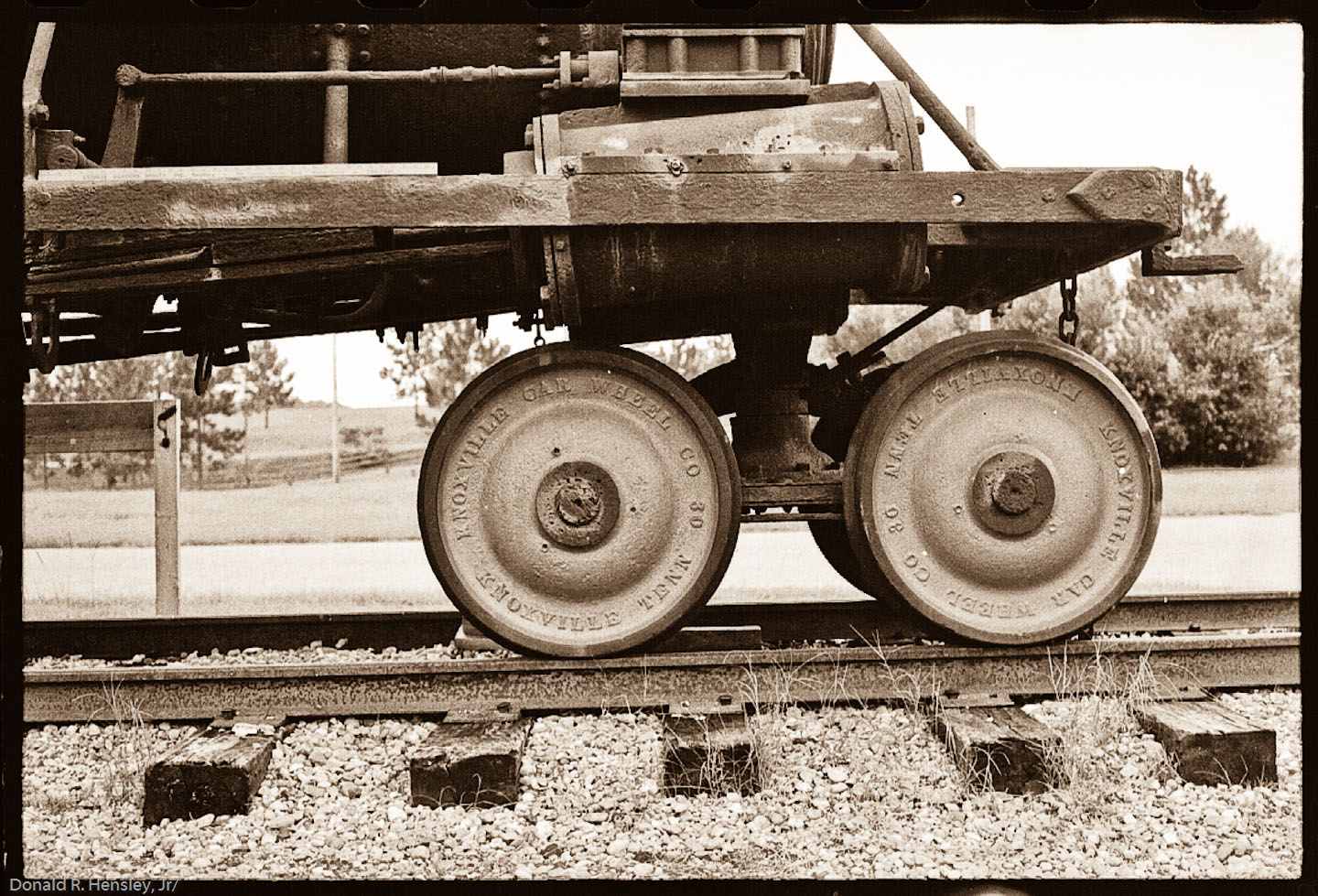 Pilot truck detail
|
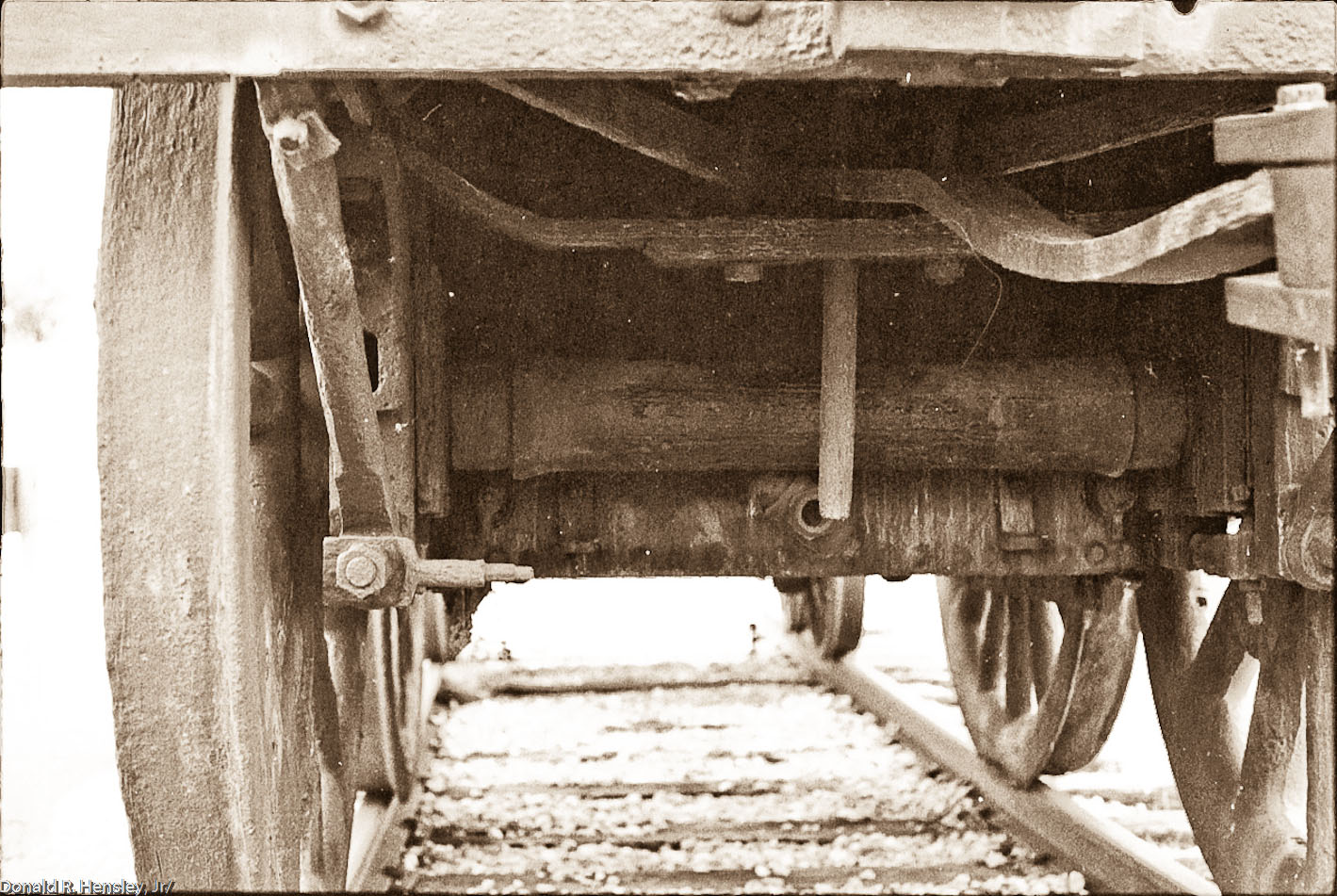 frame and axle detail
|
B&O's 1856 "Wm Mason" at
Chicago RR Fair 1948. Mason favored clean architectural lines over what
he felt was the 'clutter' of other builders. However, his perfectionism
would also often delay the actual building of locomotives at his works
|
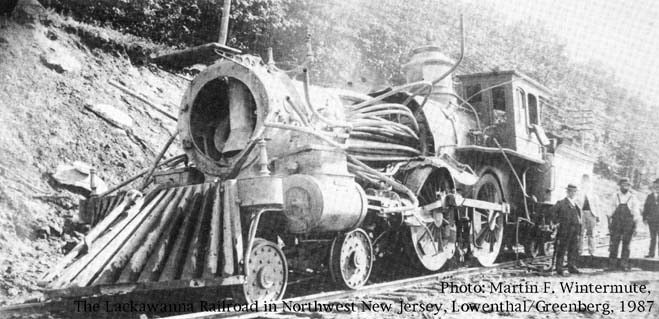 Aftermath of a boiler explosion
circa 1850. Not only were the designs evolving, so were materials
and safety appliances. While often horrific when they happened, the
numbers of locomotives increased hugely after the 1850s, but the number
of incidents per mile travelled would decrease dramatically in the
following decades.
|
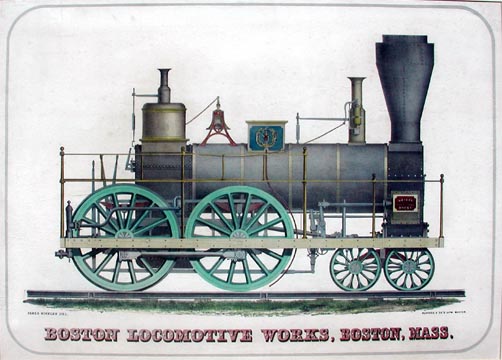 Boston Locomotive Works advertisement, ca. 1850.
|
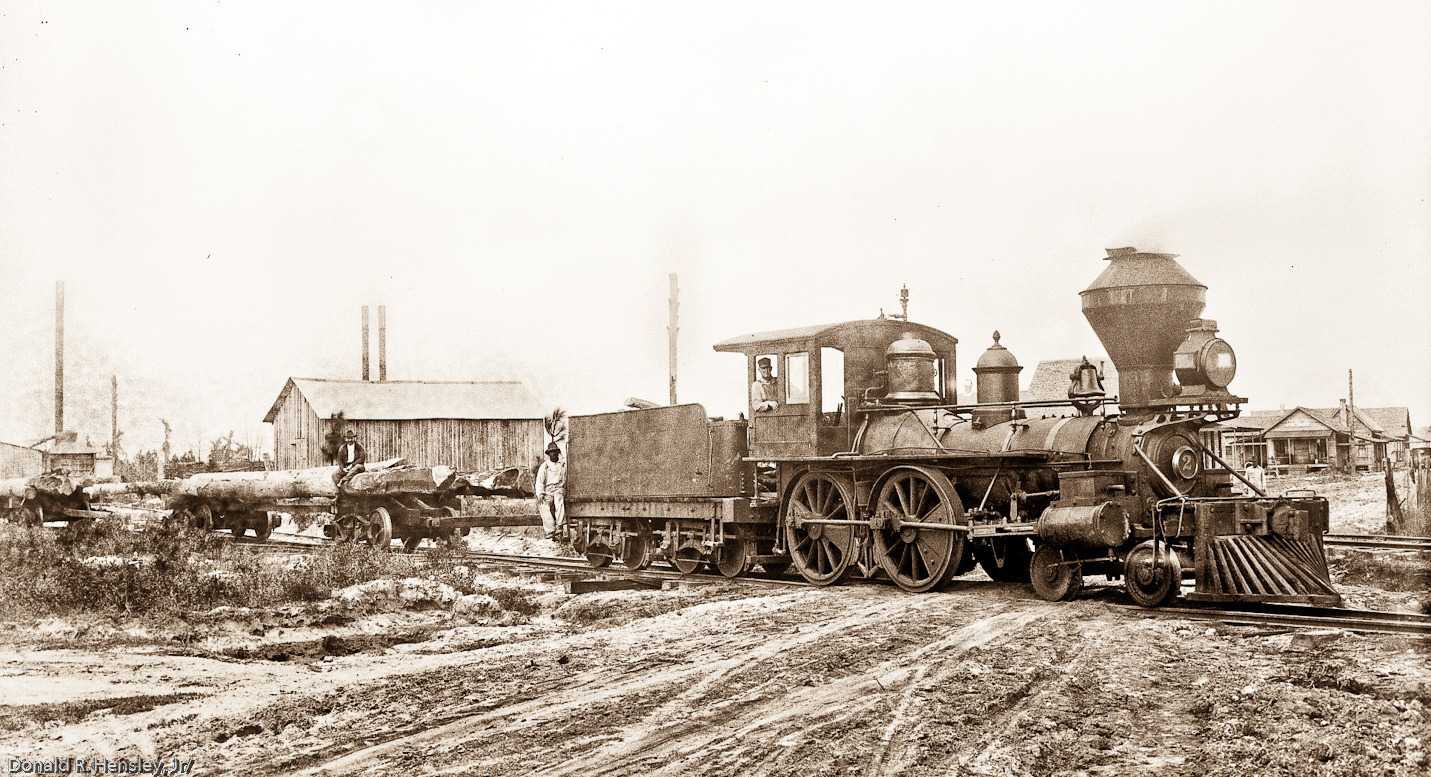 JN Brays #2, an 1856 Baldwin, still in service in 1922
|
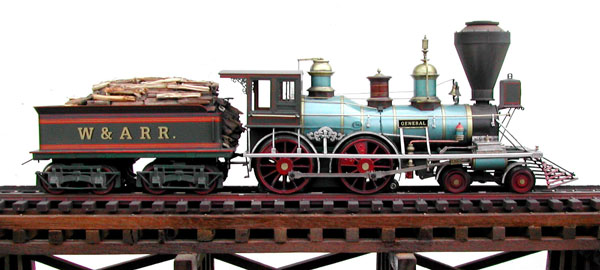 O gauge (1:46) model of the famous "General"
as she actually appeared during the Andrews Raid |
 A war damaged 1850s locomotive at Richmond, Va.
shows what was under all her fancy woodwork |
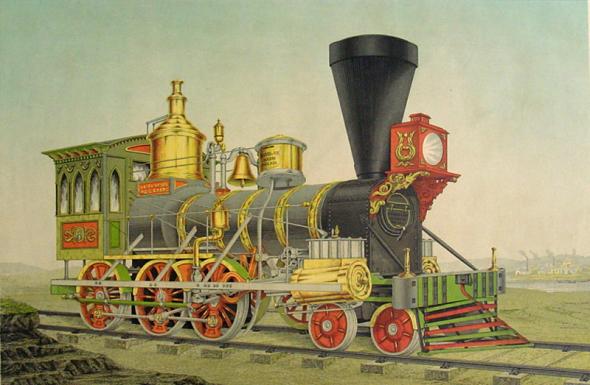 A Norris 10-wheeler of 1847.
Locomotives of this period were quite colorful, if a bit less ornate
than those produced in the decades that followed. They represented a
significant investment, and the owners were proud of them. It would not
be until much later that drab utilitarian black would become the norm.
|
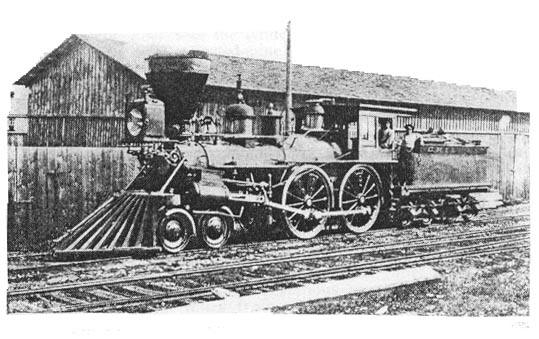 A Rock Island locomotive of the mid-late 1850s
|
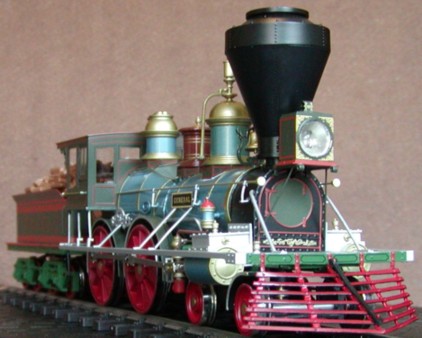 General model right 3/4 view
|
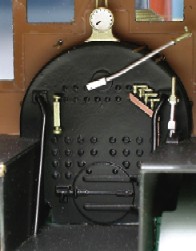 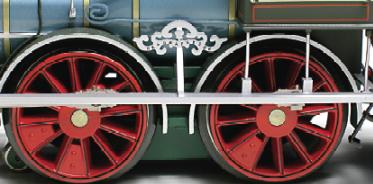 General model details
|
 Typical Baldwin design of 1853
|
 Norris Locomotive Works ad of 1847 |
 William Mason's first locomotive 1853 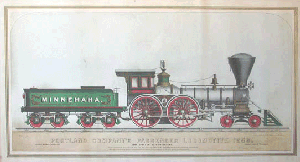 Portland Company's Passenger Engine ad, 1856. |
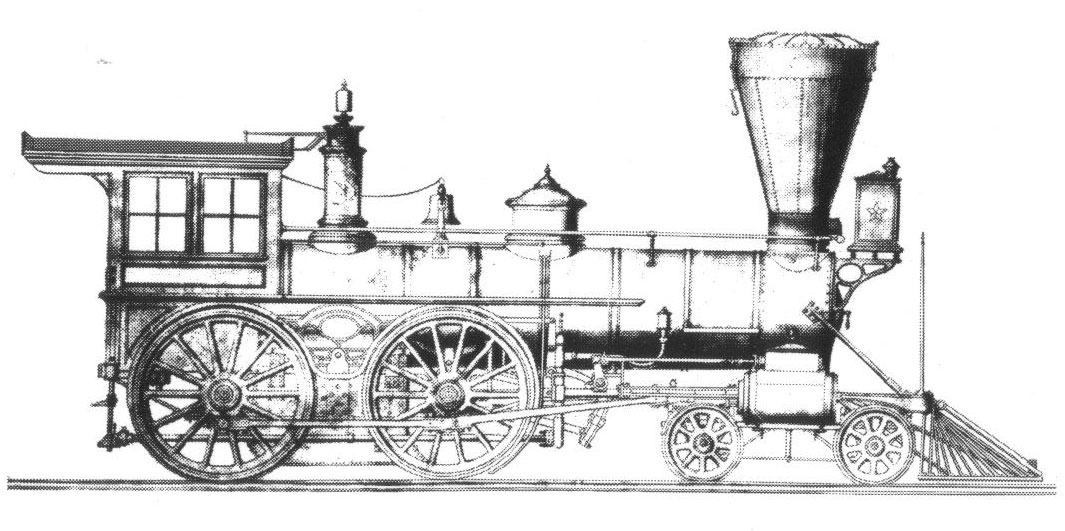 Wm Mason design of 1855
|
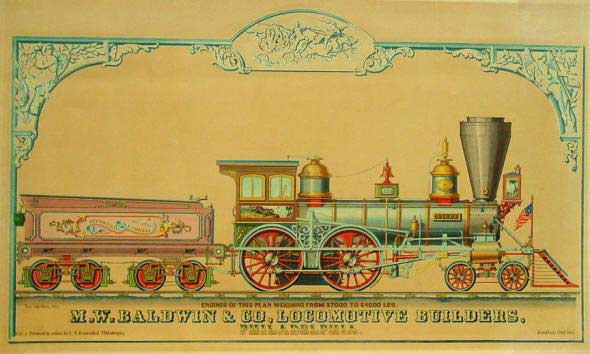 "Tiger", an 1856 Baldwin
|
 "Amazon" an 1856 Mason
|
A long firebox Winans Camel of the 1850s |
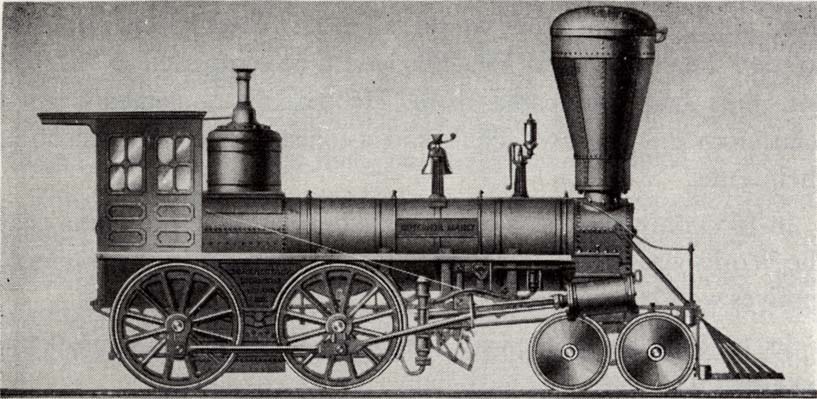 Michigan Southern Railroad's "Governor Marcy" built by Schenectady in 1851 |
 Unfortunately, no 1850s
railroad page would be complete without mentioning wrecks. Prior to
1853 accidents were rare and minor. The increased traffic, light
construction, heavier trains and higher speeds after that point
led to many horrific crashes such as this one that occured near Camp
Hill, Pa on July 15, 1856. Over 60 people were killed, and 100 more
injured, many of them Catholic schoolchildren in a head on collision
between two passenger trains
|
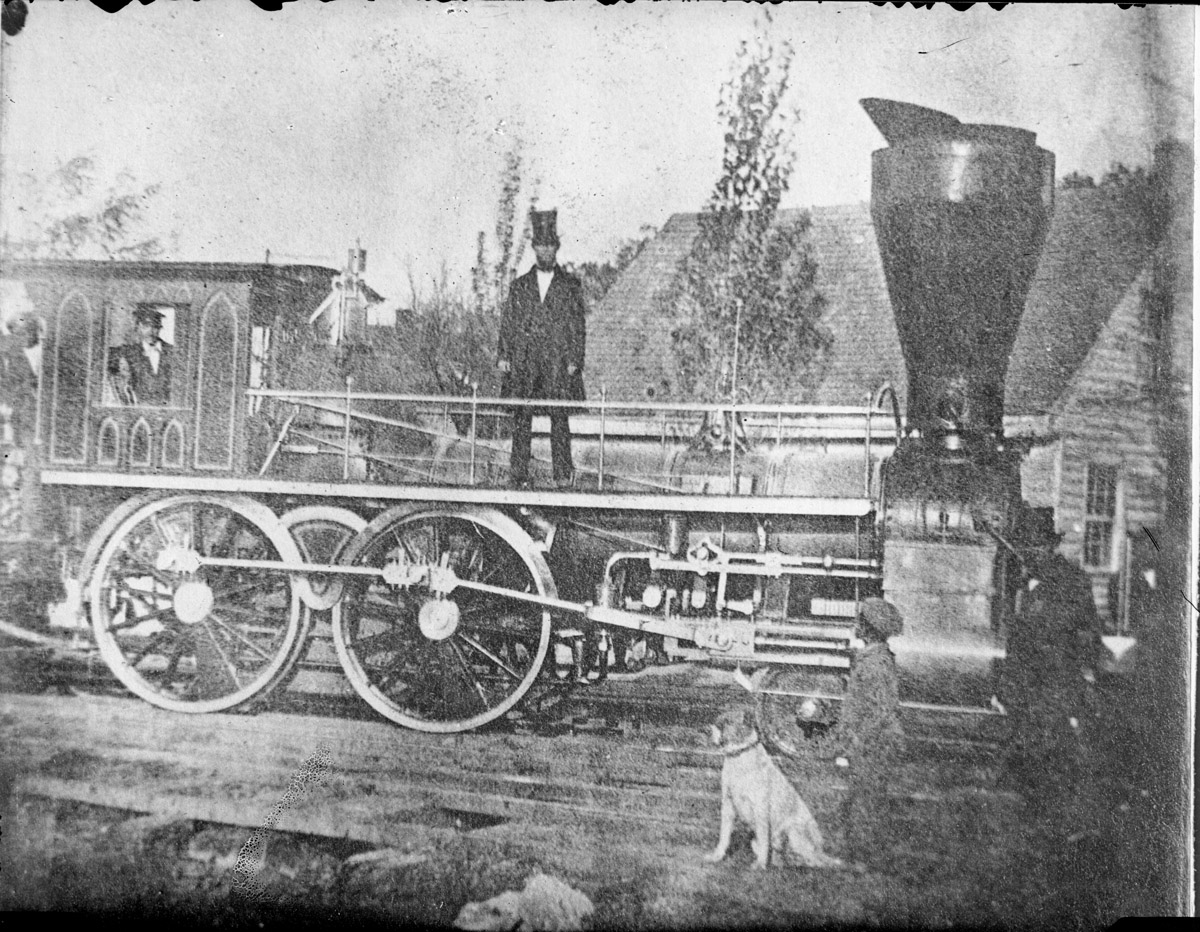 Raleigh-Gaston Railroad President W.R. Vass and locomotive, 1850.
|
Another Winans 'Camel' 0-8-0
|
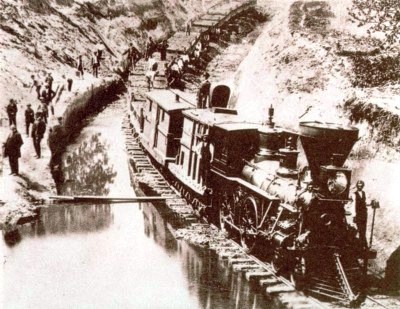 |
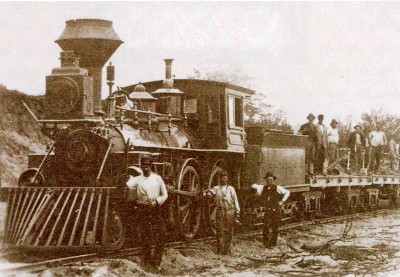 |
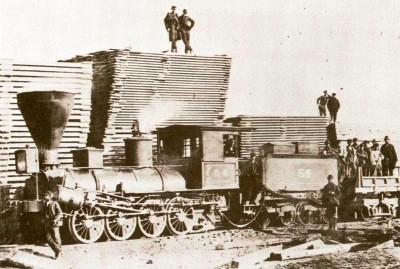 B&Os "Hero", a more conventional looking 0-8-0 built by Thatcher Perkins in 1848 |
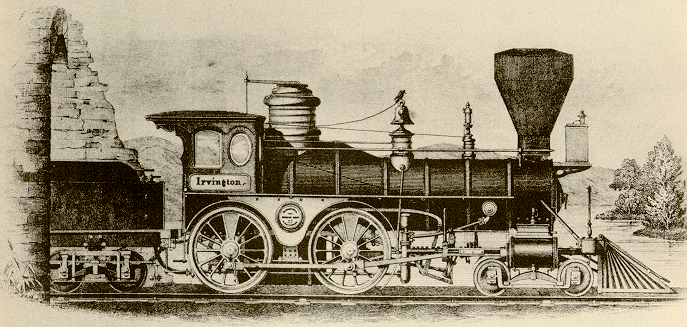 Hudson River RR's "Irvington" 1852 |
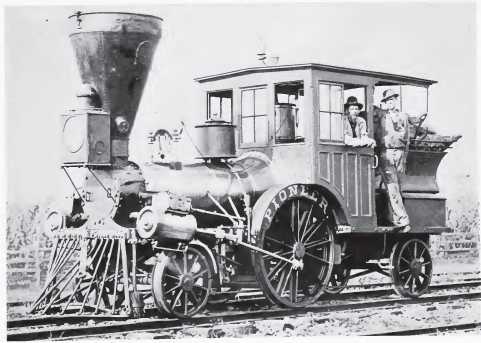 Cumberland Valley RRs "Pioneer", a light passenger locomotive of 1851 |
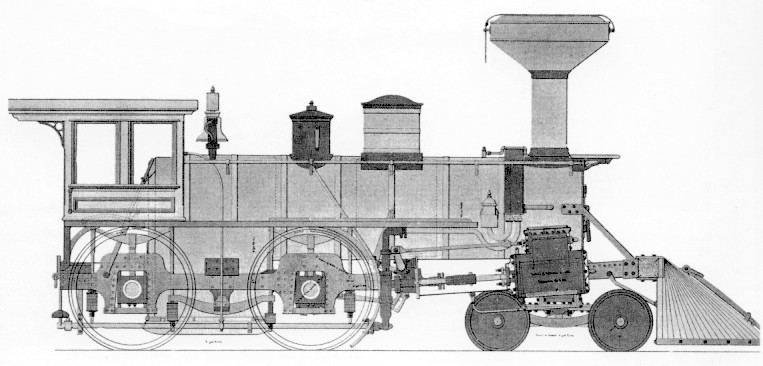 Phantom view of a standard Canadian Pacific locomotive of the 1850s |
 The Stephenson's Link reverse gear was common on 1850's locomotives
|
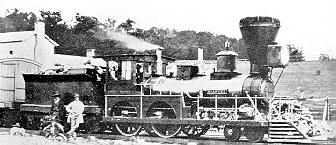 Virginia & Tennesee RRs "Roanoke" in 1854 |
 1850s Ohio & Mississippi RR locomotive |
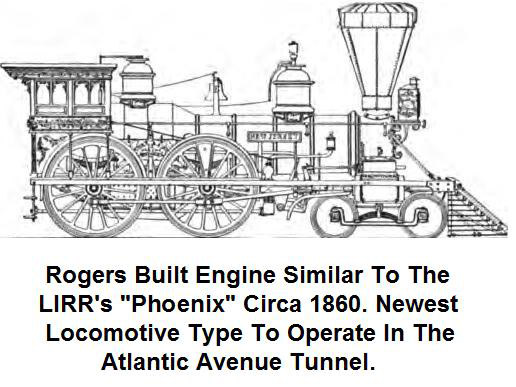 |
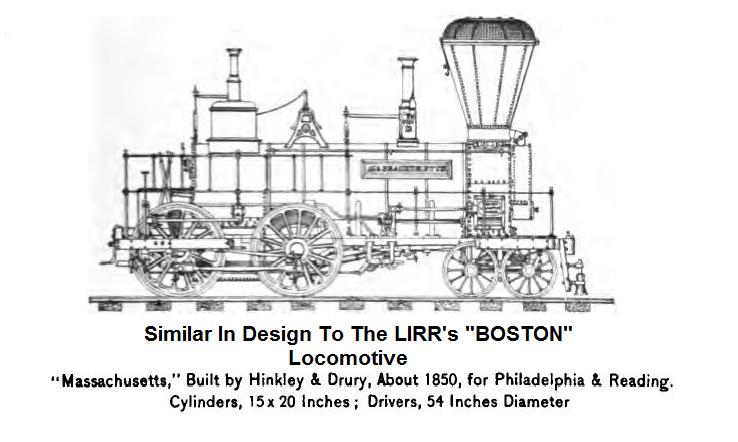 |
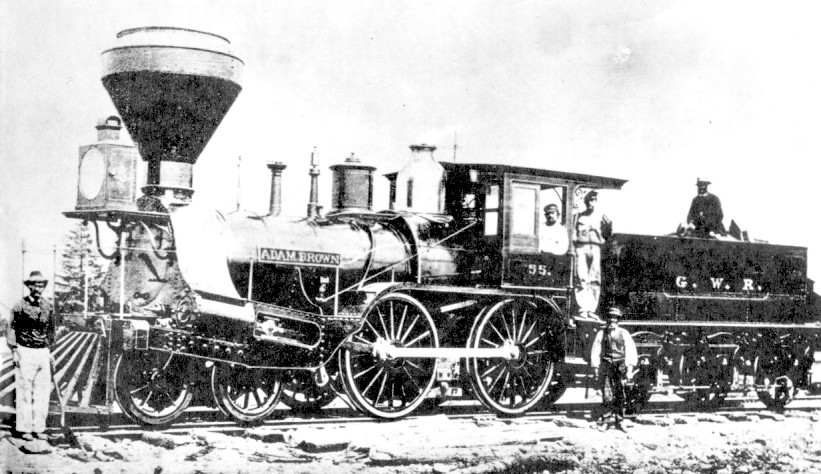 "Adam Brown", a British built Canadian locomotive of 1854
|
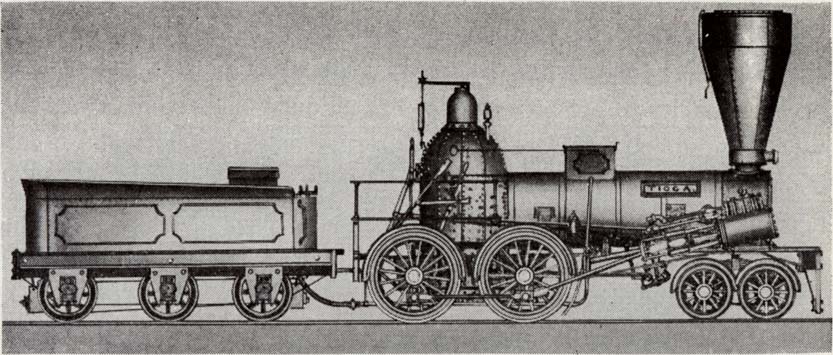 Norris & Brothers "Tioga" of the late 1840s
|
Thanks for looking!
Return me to the Allegheny Valley pages